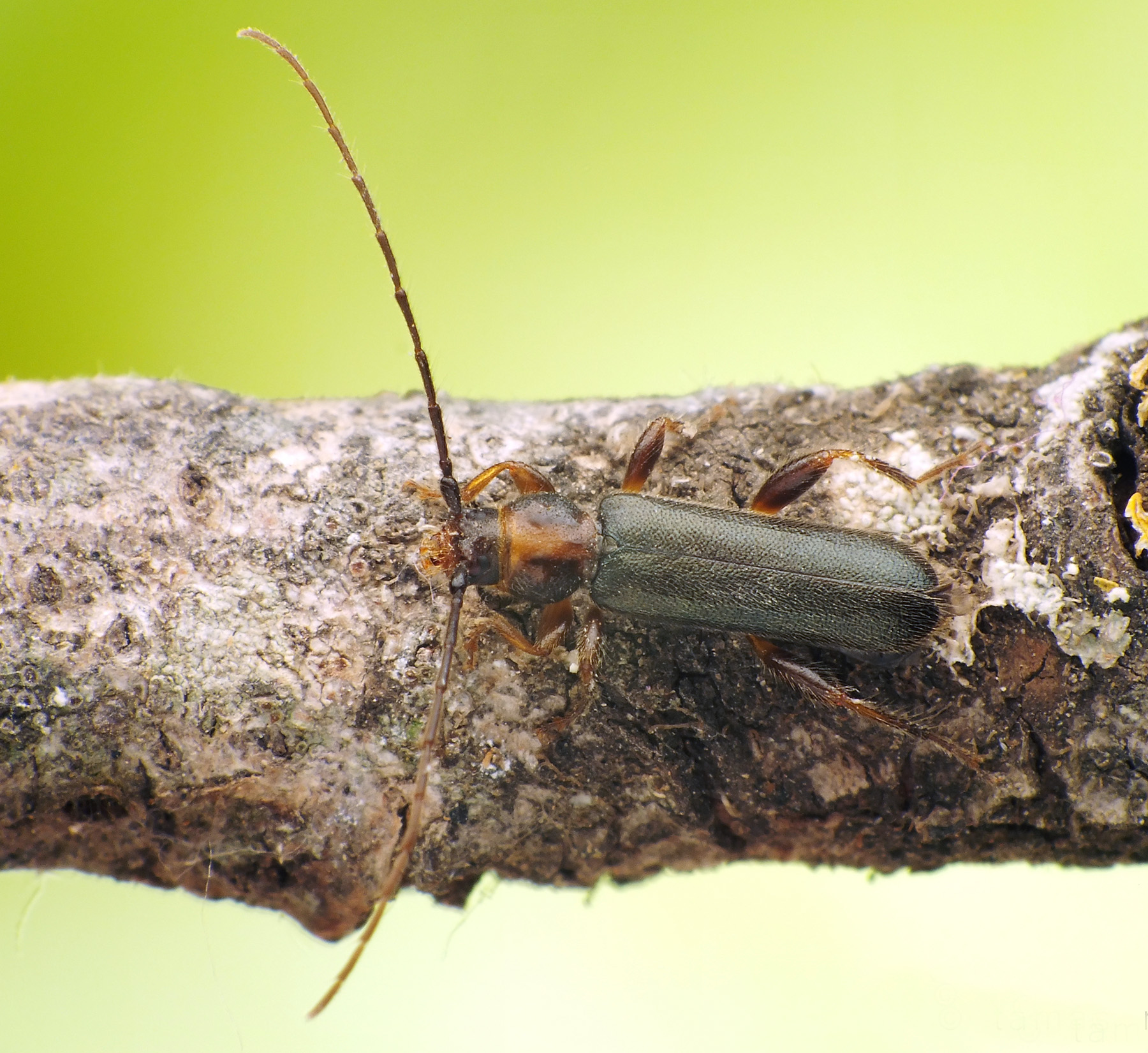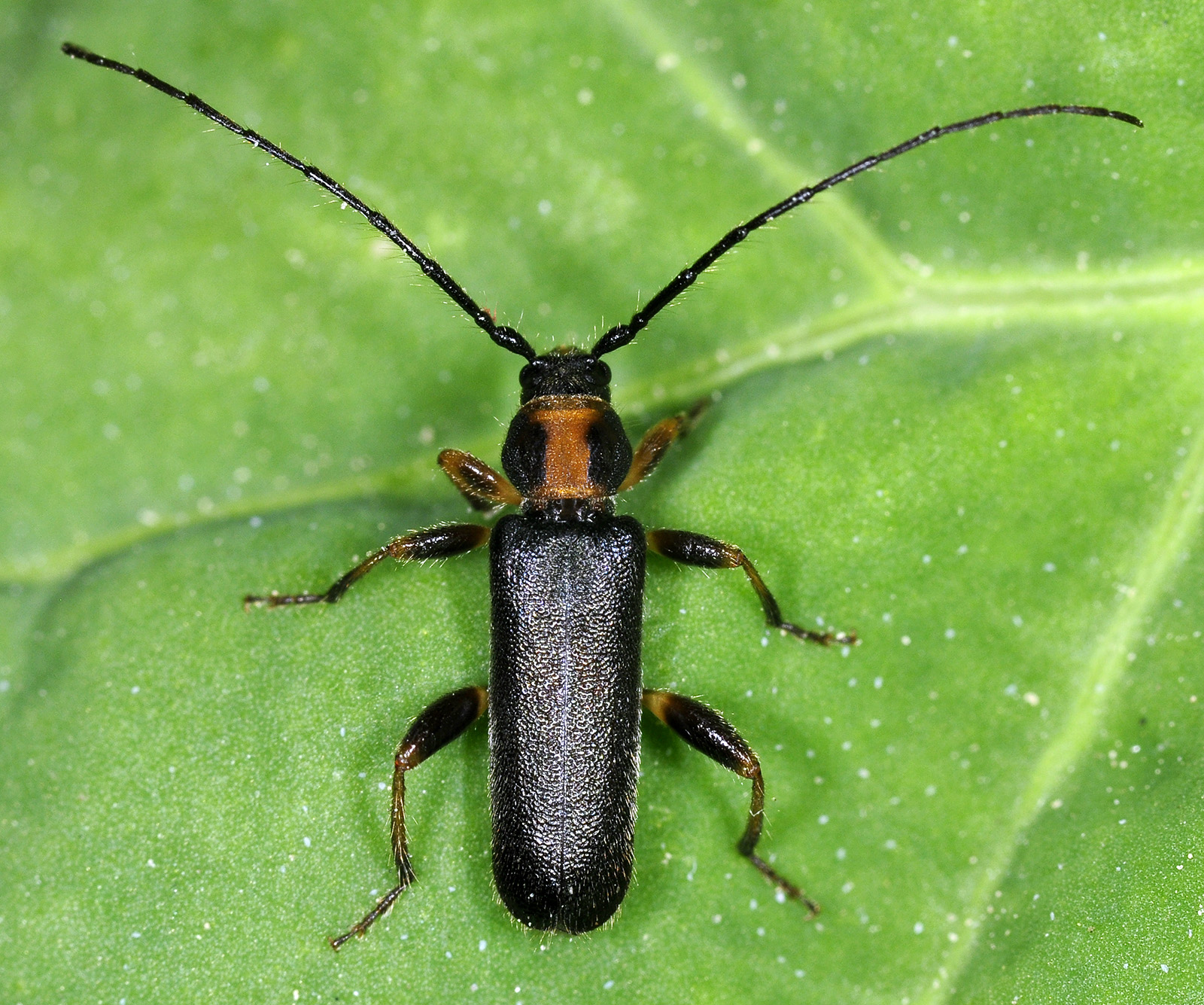[= Callidium melancholicum Fabricius, 1798]
[= Callidium brevicolle Dalman, 1817]
[= Callidium thoracicum Comolli, 1837]
[= Callidium asperipenne Fairmaire, 1879]
[= Poecilium lividum (Rossi, 1794)]
Subfamilia: CERAMBYCINAE / Tribus: CALLIDIINI

[Photo © David Navrátil, click on the picture for 4K resolution]
Phymatodes lividus, a xerothermic species distributed from South-West Europe to Caucasus (and relatively common in whole Mediterranean), has been described from Italy as Callidium Lividum by Pietro Rossi in 1794 [✧]. Biology similar to Phymatodes testaceus (Linnaeus, 1758), mostly in dead branches of smaller diameters (2-6 cm) in standing trees. P. lividus larvae feed subcortically and pupate in a hook-shaped pupal cell deep in the wood. In the absence of other suitable material, the female lays eggs in the same wood, so that several generations can develop in the same wood in a row. Adults, active from April to July, are nocturnal and can be beaten from the host trees [❖].
Body length: 5 - 12 mm Life cycle: 2 years Adults in: April - July Host plant: polyphagous in deciduous trees (Quercus, Castanea, Ulmus, Aesculus, Fagus etc.) Distribution: SW/SE Europe, Asia Minor, North Africa, Caucasus
The mounted specimens were reared from larvae found in oak branches in Močići village environs (160 m a.s.l., Konavle municipality, Dubrovnik-Neretva county, Dalmatia, Croatia) on July 28-30, 2014. The depicted living beetles were reared from larvae found in dead oak branches in: (TN) - Sicily (Italy) in 2015; (PJ) - France in 2013.Collected by Tamás Németh and Petr Jelínek
[✧]
Rossi P.:
Mantissa Insectorum, exhibens species nuper in Etruria collectas a Petro Rossio adiectis faunae Etruscae illustrationibus, ac emendationibus.
Prosperi, Pisa 2: 1-154, 1794. [download]
[❖]
Sláma M.E.F.:
Tesaříkovití – Cerambycidae České republiky a Slovenské republiky.
[ Cerambycidae of the Czech Republic and Slovak Republic. ]
Milan Sláma private printing, Krhanice, 383pp [page 146-147], 1998 [ISBN: 80-238-2627-1]. [download]

[Photo © Tamás Németh]

[Photo © P.Jelínek]
| Subfamilia | Cerambycinae Latreille, 1802 |
| Tribus | Callidiini Mulsant, 1839 |
| Genus | Phymatodes Mulsant, 1839 |
| Subgenus | Phymatoderus Reitter, 1913 |
| Species | Phymatodes (Phymatoderus) lividus (Rossi, 1794) |
